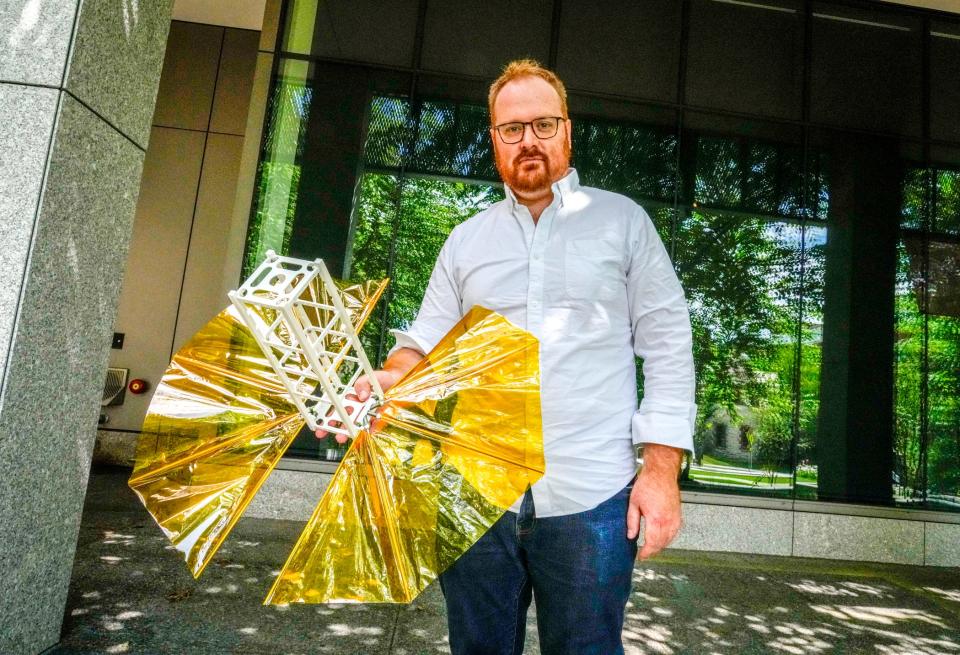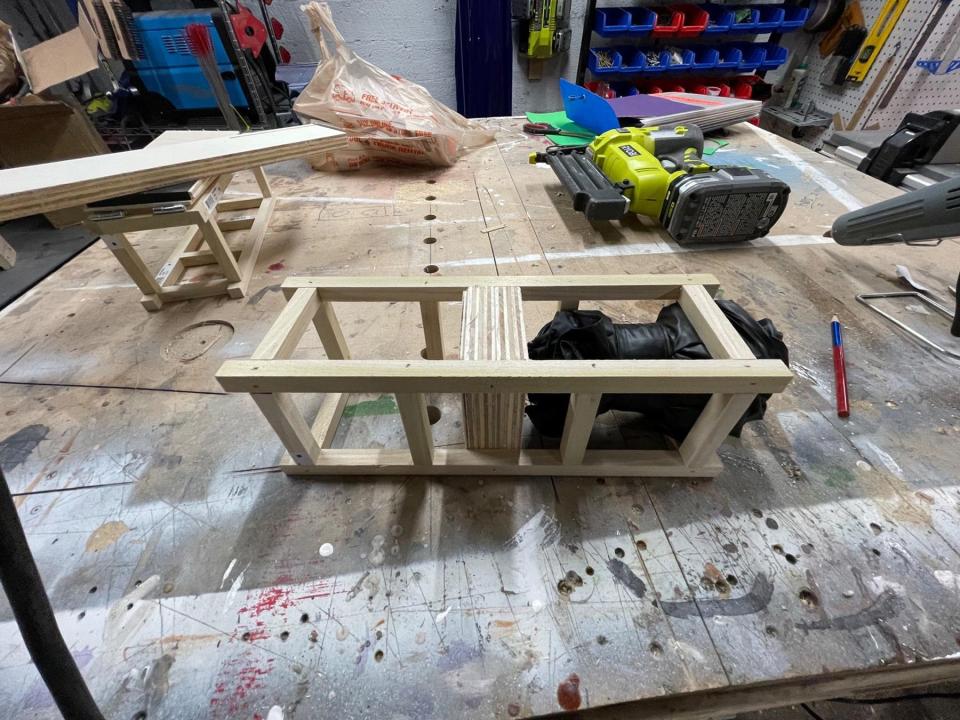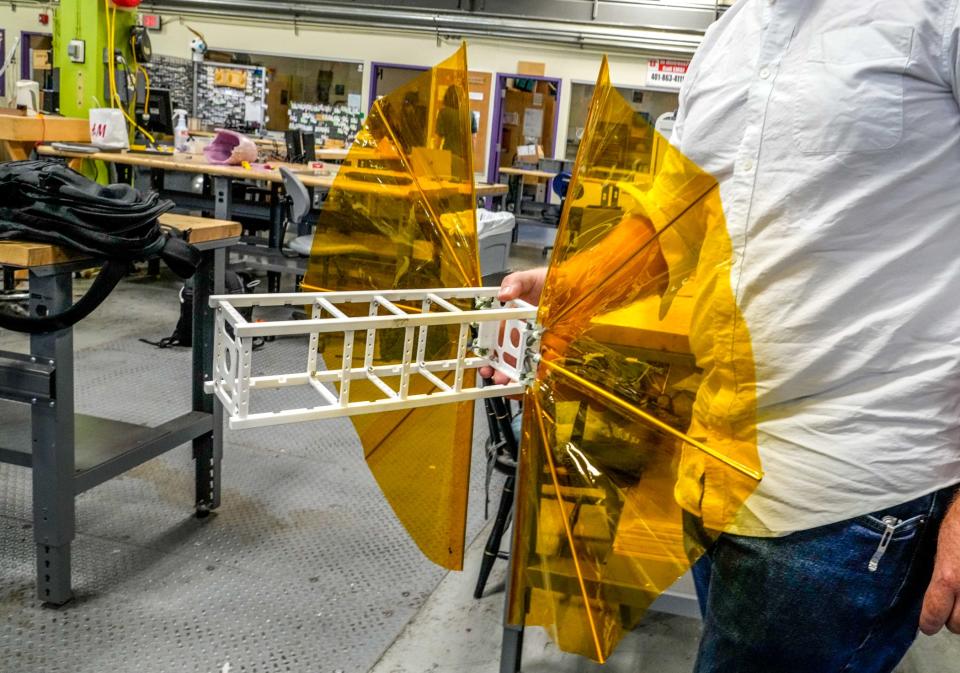Fashioned from AA batteries: Brown students launch satellite on Elon Musk's rocket
- Oops!Something went wrong.Please try again later.
Brown University students, with a low-cost satellite, are blasting off on a budget.
It’s called SBUDNIC, not to be confused with Sputnik, the Soviet satellite that launched in the 1950s. This one is much smaller, about the size of a loaf of bread. On either end, cameras equipped with fisheye lenses will snap grainy photos of Earth and beam them back to the ground every 10 minutes, and temperature data will be recorded.
All for the low, low price of $10,000.
That may seem like a hefty chunk of change, but in the space world, it’s far from astronomical.

“A lot of the choices that we made were necessitated by the fact that our budgets were small,” said Marco Cross, the project’s chief engineer, who recently graduated with a master’s in biomedical engineering. “There’s two ways of looking at this. One is that we intentionally made things really cheap, but that implies that we had some sort of choice in the matter. We didn’t.”
It all started in a space systems design course instructed by adjunct professor Rick Fleeter, who had an opportunity from Italian aerospace company D-Orbit to launch a satellite on Elon Musk’s SpaceX Falcon 9 rocket. So he gave his students what Cross described as “the greatest gift that anyone has ever given” — the chance to send something into space.
$3-million gift: RI Philharmonic will expand music education for students of color
So SBUDNIC was born. That translates to Satellite by Brown University, D-Orbit, and the National Italian Council for Research, which helped to fund the project.
How the SBUDNIC satellite was built
Building it was the hard part. This was the first time that Cross and his fellow students had ever taken such a class, let alone tried their hands at building a functioning piece of spacecraft. How did they manage?
“Lots of trial and error,” said Selia Jindal, an incoming senior, intern at Lockheed Martin Space, and daughter of former Louisiana Gov. Bobby Jindal. “We were all new to space. We’re all from a variety of disciplines and backgrounds, and we’re all students. So this was all of our first satellite. It’s all of our first time going through this, and design of space systems was all of our first course.”

Though building a satellite might not be a task for which the average person is equipped, the materials used were found in average places. Instead of shelling out money for a space-grade battery pack, students fashioned one from AA batteries. When it came to setting up a command system for the satellite, they used a printed circuit board that can be found online for less than $50.
Opening up space to more people
If everything goes according to plan, SBUDNIC could help to make space more accessible to more people.
That was a dream of Fleeter’s during his days studying at Brown in the 1970s. Now, he’s passed it on to his students.

“It’s been kind of a mantra, and it was kind of interesting to me that the students picked up on that same mantra, because despite all these years of trying to do it, it’s still a fairly elite territory,” Fleeter said.
While space remains available only to a select few non-scientists, such as celebrities and the ultra-rich, there are an increasing number of passengers jetting off into the cosmos.
What's a BioBlitz?: Amy Russo joins volunteers recording abundant life in ordinary places
Helping students: Why a Providence restaurant raised $12,000 to help Mount Pleasant valedictorian attend URI
“I think the fact that there are billionaires going to space right now is a key indicator that space is more accessible,” Cross said. “It does seem like it’s a rarefied few that are getting it, but it’s a rarefied few, as opposed to being a cadre of 10 astronauts.”
For Fleeter, this is just the beginning.
“We’ve made it to the point where fairly advanced students with a lot of help are building small satellites and doing missions, and now we’re trying to get it to the point where students pretty much unassisted, with a really modest budget, could put something in space,” he said. “And I think that is going to happen.”
This article originally appeared on The Providence Journal: Brown University students launch low-cost satellite on SpaceX rocket

